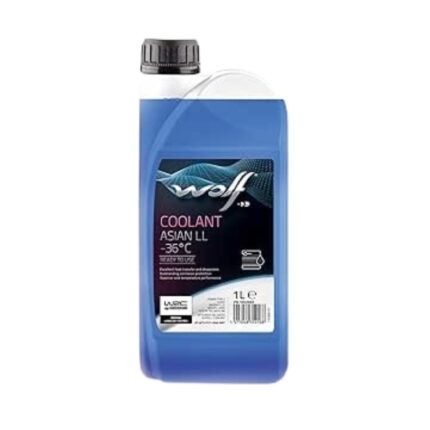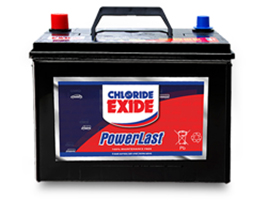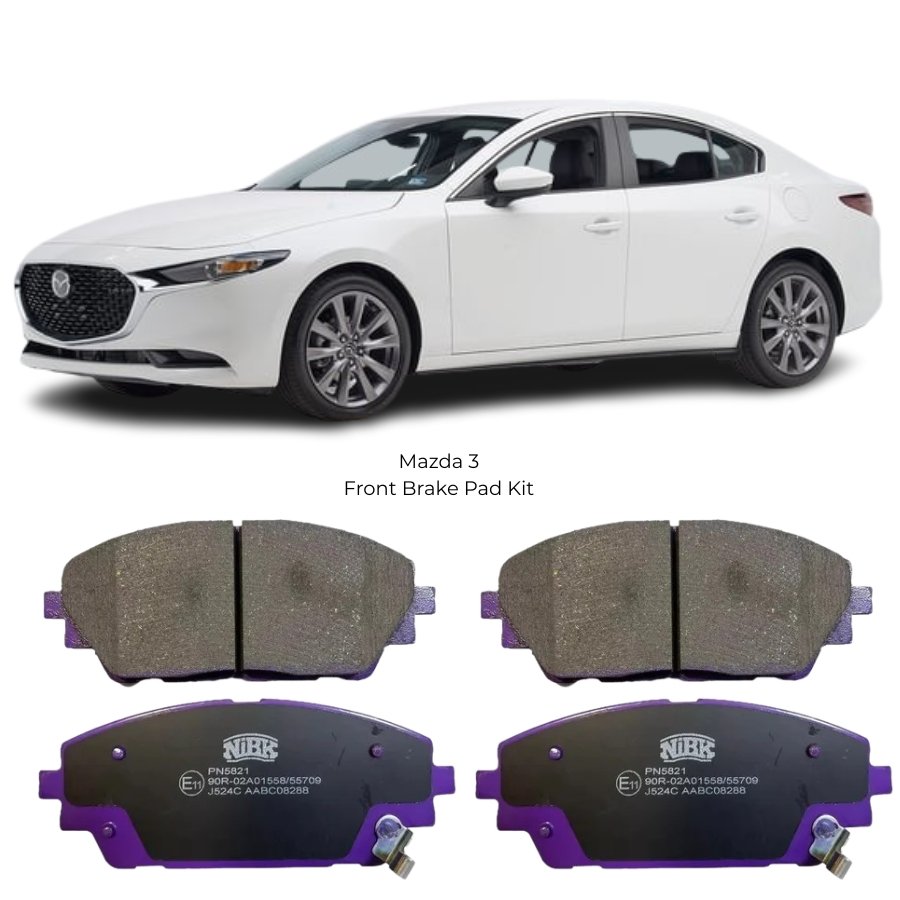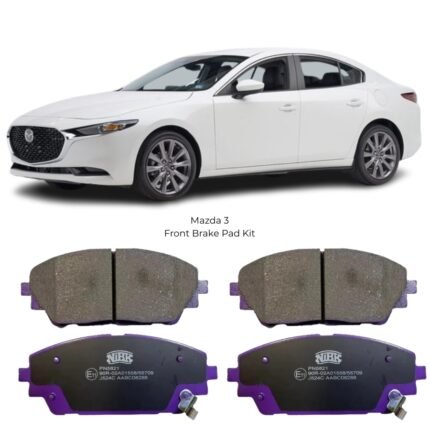Get Mazda 3 Front Brake Pad Kit PN5821 in Kenya
The Front Brake Pad Kit is one of the most critical components in a vehicle’s braking system. It ensures safe, consistent, and efficient stopping power, providing the driver with confidence and control under all driving conditions. Designed to convert the kinetic energy of a moving vehicle into thermal energy through friction, front brake pads play an essential role in everyday driving and emergency stops alike.
A complete Front Brake Pad Kit typically includes a set of brake pads for both front wheels, along with the necessary hardware such as shims, clips, and anti-rattle springs. Each component is designed to work harmoniously within the brake system to provide maximum braking efficiency and extended service life.
1. Function and Importance of Front Brake Pads
Front brake pads are the first line of resistance against the forward motion of a vehicle. When the brake pedal is pressed, hydraulic pressure forces the brake calipers to squeeze the pads against the spinning brake discs (rotors). This contact generates friction, which slows and eventually stops the vehicle. Because the front wheels handle most of the braking load—often up to 70%—the front pads tend to wear out faster than the rear ones.
Without properly functioning brake pads, braking distances increase, brake noise intensifies, and safety is severely compromised. That’s why maintaining high-quality front brake pads is essential for both performance and safety.
2. Construction and Material Composition
Modern front brake pads are manufactured using advanced materials designed to balance friction performance, durability, and comfort. Common types include:
-
Semi-Metallic Pads: Contain metal fibers such as steel or copper, offering excellent heat dissipation and strong braking performance. They are durable and suitable for a wide range of vehicles, though they may generate more dust and noise.
-
Ceramic Pads: Made from ceramic fibers and nonferrous fillers, these pads provide smooth braking, minimal noise, and less dust buildup. They also offer stable performance across a broad temperature range.
-
Organic (Non-Asbestos Organic – NAO): Composed of rubber, glass, and resins, these pads deliver quieter operation and gentle braking action, making them ideal for light-duty applications.
Each material type has unique properties tailored for different driving styles, vehicle types, and conditions. A well-engineered Front Brake Pad Kit is designed to provide consistent friction performance while minimizing wear on the brake rotors.
3. Design Features and Technology
High-quality front brake pads incorporate several design innovations to enhance braking efficiency and driver comfort. These include:
-
Chamfered Edges: Reduce vibration and noise by smoothing the engagement between the pad and rotor.
-
Slotted Surfaces: Help dissipate gases and dust, preventing brake fade and maintaining consistent friction.
-
Shim Layers: Typically made of rubber-coated steel, shims absorb vibrations and prevent squealing noises during braking.
-
Thermal Scorched Surfaces: Pre-bedded surfaces that help shorten the break-in period and deliver optimal braking performance right from installation.
These engineered features ensure the brake pads deliver reliable performance across all driving conditions, including city traffic, long highway stretches, and mountainous terrain.
4. Performance and Safety Benefits
A Front Brake Pad Kit offers multiple advantages that directly impact vehicle handling and driver safety:
-
Improved Stopping Power: The pads generate strong and stable friction, ensuring quick response when the brakes are applied.
-
Consistent Braking: Advanced friction materials maintain predictable performance across varying temperatures and weather conditions.
-
Reduced Noise and Vibration: Anti-squeal shims and chamfered edges minimize harsh braking sounds.
-
Enhanced Rotor Protection: Properly formulated materials reduce rotor wear and prevent scoring or uneven surface damage.
-
Thermal Stability: The ability to withstand high temperatures prevents brake fade during prolonged braking or heavy loads.
Together, these features contribute to a smoother, quieter, and safer driving experience.
5. Installation and Maintenance
Installing a Front Brake Pad Kit should always be done with care and precision. Before installation, both rotors and calipers should be inspected for wear, rust, or damage. It’s also advisable to clean the brake hardware and apply suitable high-temperature brake grease on sliding surfaces to ensure smooth caliper movement.
After installation, a proper bedding-in process is essential. Bedding helps transfer an even layer of friction material onto the brake rotor, promoting optimal pad performance and longevity. Typically, this involves a series of controlled moderate stops from varying speeds to gradually condition the pads and rotors.
Regular inspection is key to maintaining braking efficiency. Drivers should watch out for signs of worn brake pads such as squealing noises, a grinding sensation, longer stopping distances, or vibrations in the brake pedal. It’s generally recommended to replace front brake pads every 30,000 to 70,000 kilometers, depending on driving habits and conditions.
6. Indicators of Wear and When to Replace
A worn-out brake pad can severely compromise braking safety. Common signs include:
-
Audible Squeal or Chirp: Caused by wear indicators contacting the rotor surface.
-
Grinding Noise: Indicates the pad material is completely worn out, exposing the metal backing plate.
-
Soft or Spongy Pedal: May suggest uneven pad wear or air in the brake lines.
-
Pulling to One Side: Uneven pad wear or caliper malfunction.
-
Warning Light: Many modern vehicles have electronic wear sensors that illuminate a dashboard light when replacement is needed.
Addressing these warning signs early prevents damage to other brake components and ensures continued safety on the road.
7. Compatibility and Selection
While the core function of brake pads remains the same across all vehicles, the design and size vary depending on the make, model, and braking system specifications. Selecting the correct Front Brake Pad Kit ensures proper fitment, optimal contact with the rotors, and balanced braking performance. It’s always advisable to match the pads with the manufacturer’s specifications or consult a professional technician before purchase or installation.
8. Longevity and Care Tips
The service life of front brake pads depends on several factors, including driving habits, road conditions, and load frequency. Drivers who frequently brake hard or drive in stop-and-go city traffic will experience faster wear than those who mostly drive on highways. To extend brake pad life:
-
Avoid unnecessary hard braking.
-
Maintain proper tire pressure and wheel alignment.
-
Keep the braking system clean and free from debris.
-
Replace worn rotors or calipers promptly to prevent uneven wear.
Routine maintenance not only extends the lifespan of the pads but also keeps the entire braking system in top condition.
Follow us on Facebook for more parts.





Reviews
Clear filtersThere are no reviews yet.